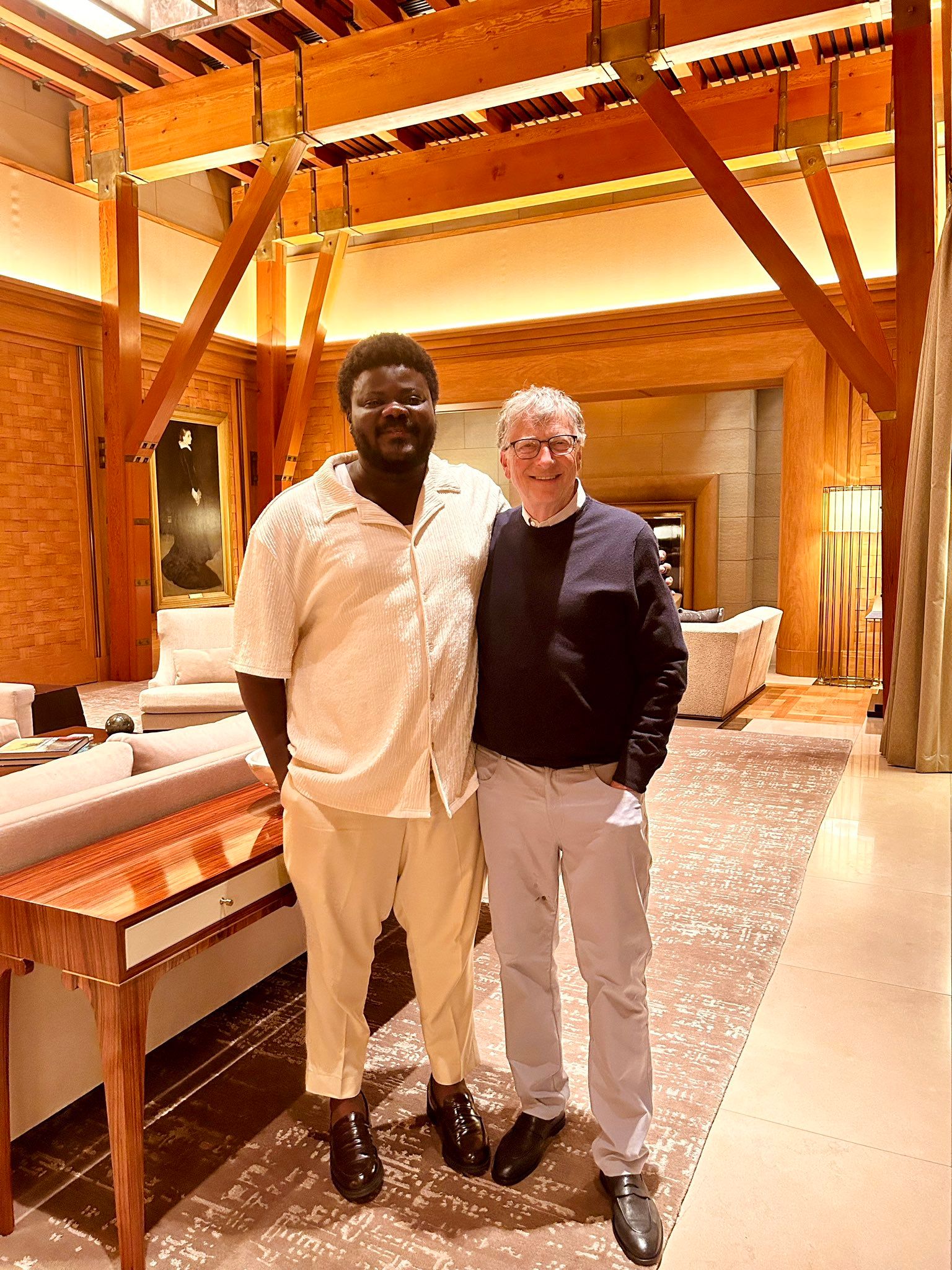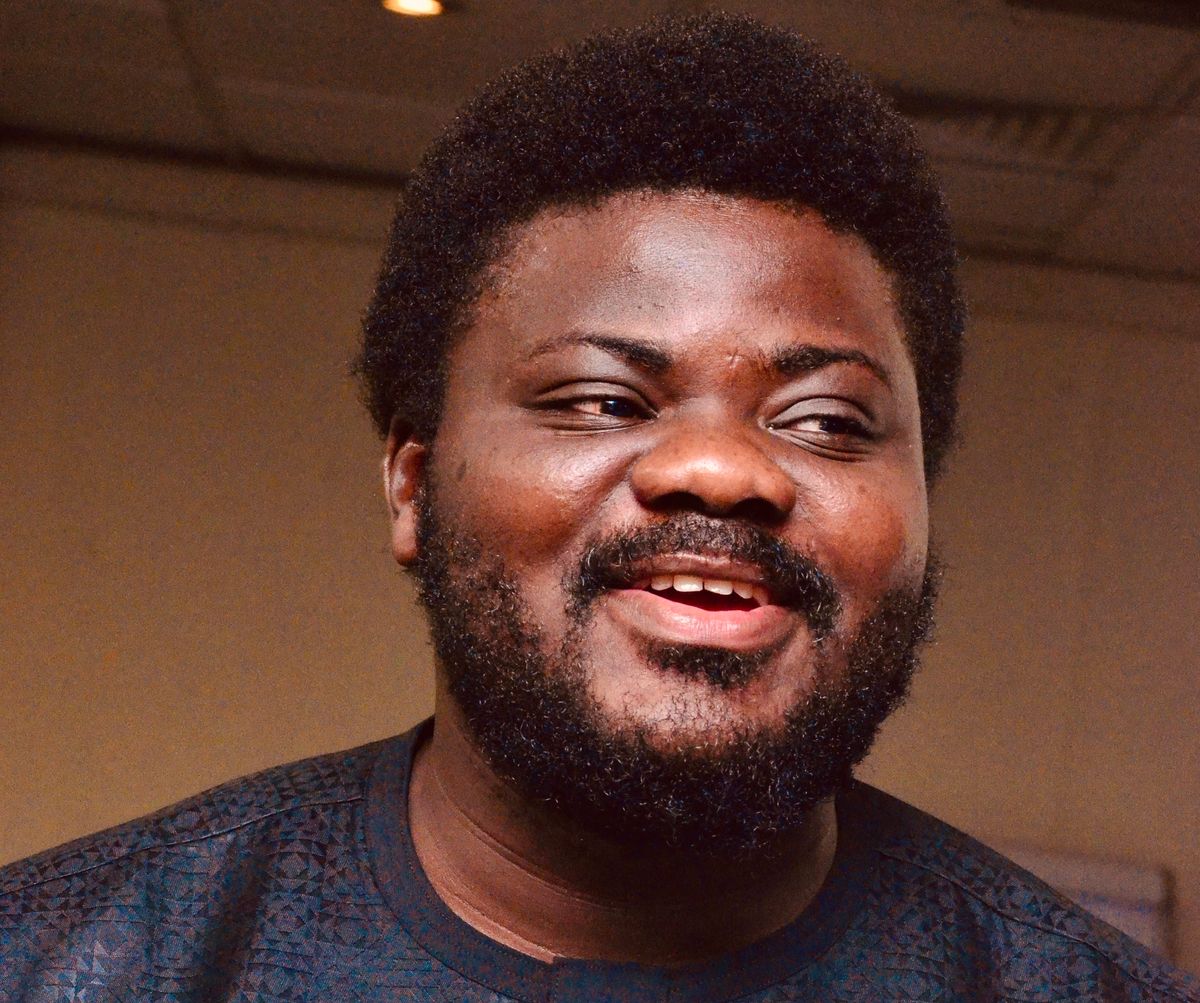Movies can be a source of inspiration, and Sci-Fi genres are particularly influential due to their ability to stimulate imagination and spark curiosity about what is possible beyond human current reality. Although they are fictional, they evoke a sense of wonder, amazement, and realism in their fans. The thrills and inspirations are what make people have toy replicas of fictional characters, mostly superheroes, in their homes or workspaces. It’s the same reason people adopt superheroes as their alter egos. My friend, a Star Wars fan who has a toy of Master Yoda with a lightsaber on his work desk, told me that it helps him relate to his traits and inspires him to embody those traits in his life. The story you are about to read is one that started with the character’s passion for Artificial Intelligence (AI) as a result of watching Sci-Fi movies, which has now led to a career pathway towards solving global healthcare problems. Meet Darlington Akogo, aka the AI evangelist, the character in this inspiring story.

Discovering minoHealth
Recently, Darlington found himself at Bill Gates’ home for a private dinner, an experience he described as 'a bit out of body.' It didn't just happen; it took sweat, blood, and tears to get there. Back in 2015, when he first tried to bring this idea to life, he lost the code and was very frustrated. Motivated by the challenges afflicting the healthcare system, including a shortage of clinicians and his personal experiences accessing healthcare in Ghana, he rewrote the code from scratch.
Darlington: So, I started Mino Health AI Labs give or take 2016, I believe 2016, yeah 2016. It is a bit fuzzy because there were a bunch of starting points. There was a point where I actually did start in 2015, wrote some codes and lost all of it. So I was pissed for almost a year before I decided to restart in 2016. The whole starting point of this is being frustrated with the state of healthcare. I mean there are a few stories here and there that connect to that but visiting the hospitals in Ghana was quite stressful because you know you have to wait a whole lot. And then, while you're waiting you see all sorts of stuff. You see mothers with their babies that are almost dead and they will tell you Accident and Emergency wards are full. People involved in accidents rushed in and can’t access healthcare… all types of very very scary and gory stuff. And my thought was, “this can’t be healthcare!”. Back then, my mentor, Kwadzo Amoafo Yeboah, who introduced me to computer programming, advised me to document problems and come up with solutions for them. So, I kept a red journal filled with numerous ideas—hundreds of tech and software projects that I wrote down to implement. Frustrated by my hospital experience, you know, I wrote it down and thought, 'I am going to play around with a technological solution to improve healthcare.' Thus, I drafted some ideas as far back as 2013. Every now and then, I'd pick one and hop on it. It was like a few years later when I decided to revisit the notebook, pick the healthcare project, and start working on it. The idea went through a number of iterations on how to make healthcare more accessible, rapid, and affordable.
The goal was to ensure that people wouldn't be stuck, and healthcare services wouldn't be delayed significantly. After several iterations, it became clear that one of the biggest points of blockage is diagnostics. When you arrive at the hospital, diagnosis is crucial in determining what is wrong with you. It is a key process before everything else. A qualified doctor won't just see you and start treating you; they need to pinpoint exactly what is wrong. So I started looking at the numbers around diagnostics and realized that we are plagued by quite a lot of shortages when it comes to clinicians that are capable of doing this. And then when you look broadly within the space of medicine, for example in Ghana, there is only one doctor for every 10,000 people. Surprisingly, this is not the worst in Africa; Malawi has one doctor for every 60,000 people. Specifically within certain specialties, such as radiology, which involves procedures like CT scans and mammograms. So, we started looking at the numbers around this. In Ghana, there were less than 40 radiologists, resulting in a ratio of 1 for every 800,000 people, which is quite sparse. Then, when you look at other countries like Liberia, they only had 2 radiologists in the whole country. Clearly, this is where some of the largest gaps exist. The goal for minoHealth AI Labs was to eventually address all major gaps in healthcare. This involves starting with the largest point of gap, which is also technologically solvable, especially given the current state of things and the available technologies. This led to the establishment of minoHealth AI Labs, or at least the minoHealth AI platform, which went through a number of iterations.
Going against the Golden Hammer
Darlington takes pride in being known as an 'AI Evangelist'; needless to say, he has a bias toward AI. The natural instinct for individuals like Darlington is to apply their golden hammer (superpower) to every nail (problem) they encounter. The golden hammer is a cognitive bias where people overly rely on a familiar tool or solution, regardless of its appropriateness for a situation. It's like using a hammer because it's familiar, even when a screwdriver might be more appropriate. However, Darlington went against that instinct. When he started, he never imagined AI to be the solution to the problem he set out to solve. He had gone through a series of iterations to arrive at a solution that fits the problem, and that eventually involves AI.
Darlington: The idea went through different iterations. When I started, the funny thing was that minoHealth originally was going to be an appointment booking system. Because, I was saying “if you could book an appointment then you would not have to stay in line” but then I was like “wait wait wait. Why is there a queue? Is there a queue because there isn't an appointment system? Is there a queue because there are not enough doctors and clinicians? An appointment will definitely make things more efficient but it does not solve the problem?” So then I was like “okay, can I build systems where you could automate some components then the specialist doesn’t have to do everything”. I was not even thinking about AI even though I said automation. So I decided to pick some common medical conditions and write the rules for diagnosing it. So in the system, if you try booking an appointment, you will drop certain symptoms and then I will write the rules that if the patient has a headache and stomachache, then it must be disease A. So a bunch of conditional statements. Then I realized that No, these things, you can not write rules for them because there are infinite rules for infinite conditions. Then I was like what could be the solution. To put a bit of context to this: Back in 2013, I tried doing AI just because I have been passionate about AI from all the Sci-Fi movies.
So I bought a book on AI using Java, Pascal and some old languages. It was horrible. This was not Machine Learning, it was like Symbolic AI, which is boring. I still never went to Symbolic AI; no one does symbolic AI again. It’s boring so I lost interest in it. So when I was doing this stuff back in 2015 I wasn’t thinking about AI because for me the reality of what AI was capable of then is lame. It is nowhere close to all the cool dreams but then the more I started defining what the solution to this problem will look like, I was like, ah if only there was some way you could feed some system with data and then you could learn from that data. So I started doing a lot of reading to see where Tech currently is and that is what brought me into the big data world so I went to use Hadoop PigLatin. So I was like, if I could come up with a big data type of system that would mine a lot of data from healthcare, then I could write a bunch of algorithms to interpret that data. A lot of this stuff I was learning and building so I went to learn the whole Hadoop PigLatin and all that stuff. Then I realized that only solves part of the problem – getting the data. Interpreting that data to make conclusions is also not possible with the likes of it. So more digging, more digging then I came up across Machine Learning. I heard about Machine Learning then but did not pay attention to it. So after my digging, I went to watch tutorials and read a bunch of books which enabled me to build my first neural network. Then I was like “this is exactly the solution”, get a bunch of data in input and output format and then you get this complete system… call it a universal function approximator – basically something that will figure out the rules, I don't have to write the rules, get the input and output data and itself will figure out the rules. So Machine learning became the answer. The appointment thing was of zero interest to me at that point. So I threw it all away and then ended up focusing on making diagnostics scalable using machine learning and deep learning.
The Over-Built MVP
Minimum viable products (MVPs) are early versions characterized by minimal feature sets, designed to collect user feedback and validate proposed solutions. In attempting to address the problems Darlington identified, he created an MVP; however, it ended up being crammed with numerous features aimed at solving all the issues. .
Darlington: The first version I did all the coding myself, I did the UI/UX, I did the frontend, backend, machine learning development all of that. The whole platform was written in about 7 programming languages. The features were ridiculously broad for that version which was a wrong thing to be honest because I was looking at the bigger problem instead of just picking one aspect of the problem and targeting it. And, I ended up adding features that cut across so many things and it was a bulky system which was interesting.
Doing it right: Going back to Square One
Darlington realized the need to do the MVP the right way, so he had to go back to square one and build from scratch. He focused on research and involved stakeholders, putting out AI research papers and having scientists from around the world peer-review his work. This helped him form partnerships and build credence. Once the research matured to the point of building products, he started building them from scratch. So, he began with a focus on AI for Radiology – an AI system that can interpret medical images like x-rays.
Darlington: We went through a rigorous process and released the first AI Clinical Evaluation study in Africa. So we took our AI system, gave it clinical data on conditions like cardiomegaly and pleural effusion and then compared it against a radiologist to see if our AI system would perform close to radiologists, I mean it did, not only that but it actually outperformed individual radiologists.
minoHealth’s AI platform now uses Artificial Intelligence for automated diagnostics, forecasts and prognostics. The system takes a medical image input and then determines if the chosen condition is present or not(diagnostics), if it’d develop (forecasts) and its progression (prognostics). minoHealth’s AI platform has users from 50 countries across Africa, Europe, Asia and America.
Darlington: A couple of days ago, we were looking at our analytics and realized that our largest user base is first Ghana and second is the United States of America (USA) which is kinda interesting because we have not done any marketing or anything like that in the USA. And then some of the facilities we have worked with you know when we ask how this is helping and they will be like: Oh, we use the AI system and it was able to pick up for a patient a nodule that we missed because it was tiny - that was quite incredible and amazing. A nodule basically can be a cancer. So our AI system helping to detect cancer is very fulfilling to hear stuff like that.
The Future of minoHealth AI Labs
Darlington: Now we are even working on a whole different version of our AI system which is a multimodal large language model. So basically that’s like GPT4 but for medical image interpretation and broadly healthcare. But we are not using GPT-4, we are actually building our own generative AI system. Currently, we're doing continued pre-training. And this is the first of its kind in the world. This one AI system that would eventually do all the stuff all our AI systems could do. All in one. It could be an AI system that if you want to have a conversation about pharmacology, it could do that, if you want it to look at medical images it can do that. We’ll release an early version before the year ends. But it will be a very early version because we are getting this huge African data and we need to build this huge AI system, which is a capital intensive process. We’ll release an early version that will show people what we are trying to do. It’ll have some of the features we describe like medical image interpretation and stuff like that. That should be out before the year ends. The power of this particular AI system is basically what minoHealth was set up to do but the technology at the time could not allow for it. You know digital things scale. If we can actually build a digital doctor, we could scale it up to as much as you know digital hardware is available.
Progress of AI in Healthcare in Africa
As an AI enthusiast, Darlington believes there has been progress in the Healthcare Space in Africa as far Artificial Intelligence is concerned. Stakeholders are now realizing and embracing the relevance of AI as a tool that aids in efficient and effective healthcare delivery as compared to the initial difficulty getting stakeholder aligned especially with the rise of the recent AI wave. That to Darlington is progress because it was for the same reason he had to become an AI Evangelist – preaching the AI gospel & bringing to light the future endless possibilities with AI.
Darlington: I am so excited. Like, super excited about it because when we started in 2017, no one wanted to listen to us. No one took us seriously. I’d go to these facilities and they would be like “what? an AI system within the facility making the decisions, like diagnosing? No”. But now pitching and engaging people has become super easy. Once I start, they are like “yeah yeah we get the value of it”. No one is actually pushing against AI. It is just: how do we make sure this does not threaten our job. Okay, should the AI make all the decisions or should the clinicians be involved, should they have the final say, what are the regulatory requirements, what if the AI system hallucinates, what are the ethical frameworks, the boundaries and all of that stuff. Those are more of implementation discussion, no one is questioning whether you need AI or not anymore.


